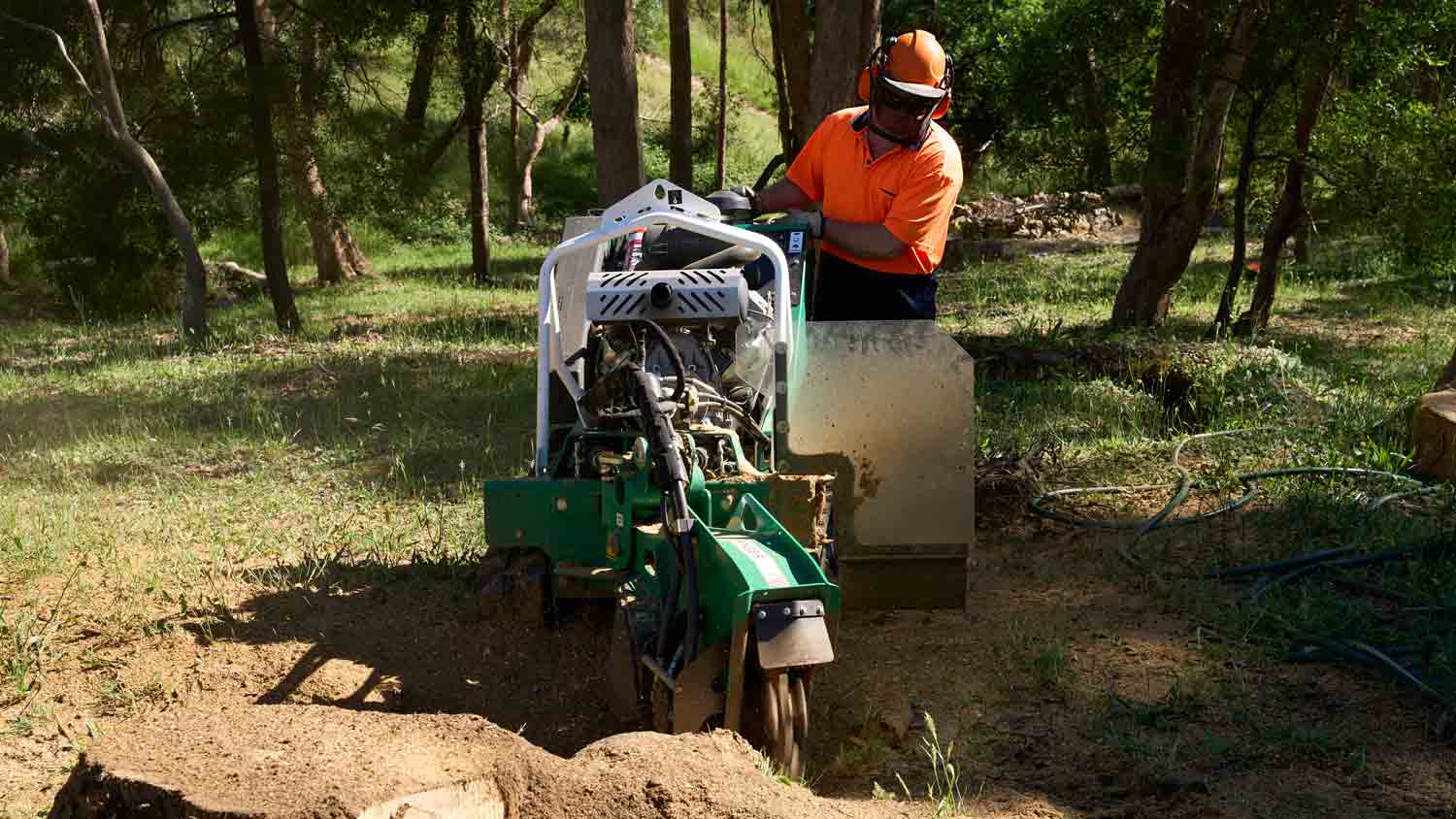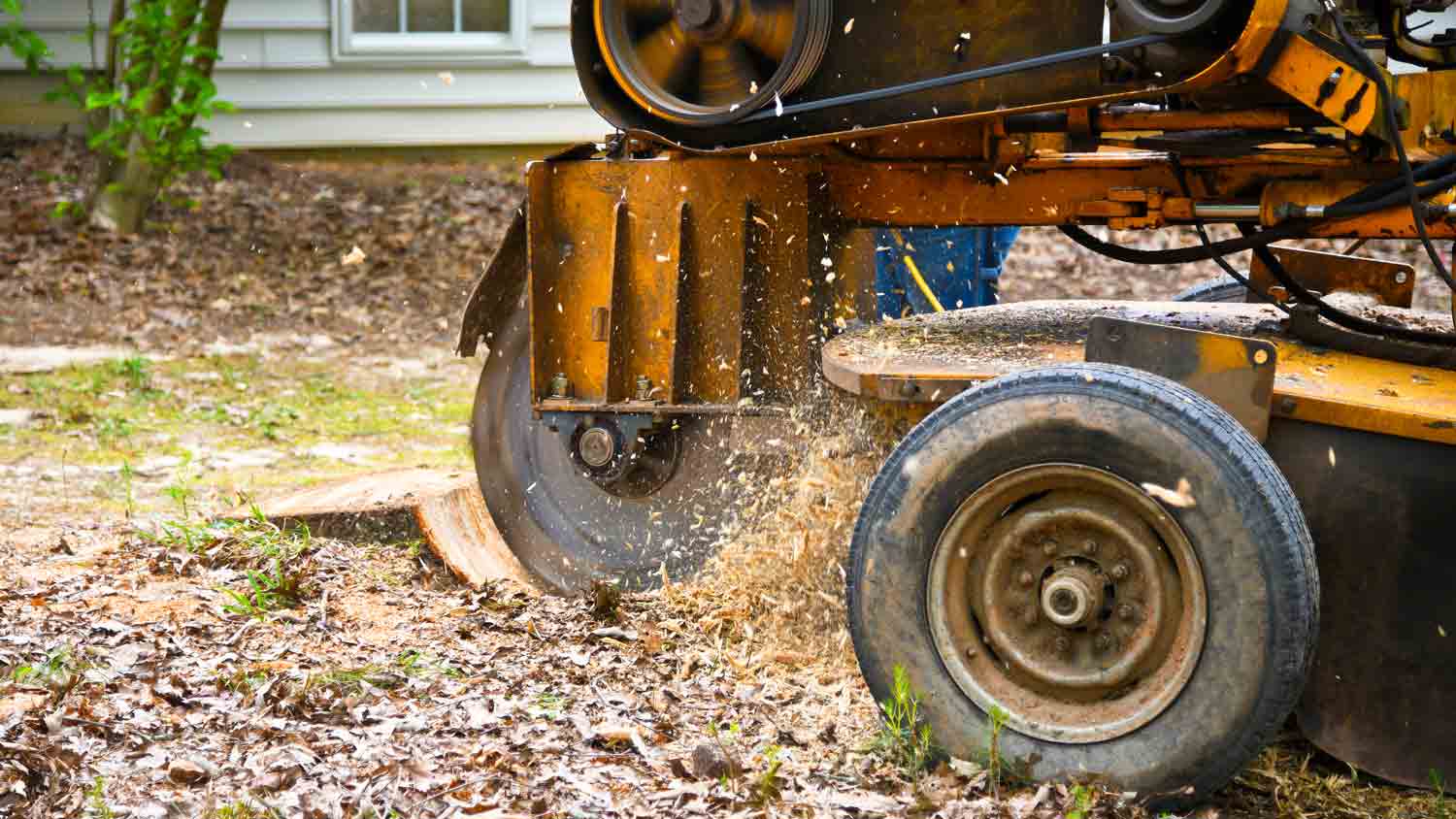Who Will Pick Up Stump Grindings?
Your stump removal service should take care of leftover stump grindings


Once you remove an unsightly tree stump, who will pick up stump grindings? Your stump removal service is often responsible for removing any leftover debris, but there are other options to consider. Let’s review how to find the right service to remove your stump, as well as the debris left behind.
Benefits of Hiring a Professional Stump Removal Service

Removal of sawdust and debris is typically included when you book a local stump removal service. If you haven’t booked your service yet, be sure that debris cleanup is included in your contract.
Here are the key advantages of hiring a professional stump removal service:
Proper disposal: Professionals have access to disposal sites or composting facilities to ensure stump grindings are handled correctly.
Save time and labor: Hauling away wood debris can be physically demanding and time-consuming, so you’ll save yourself time and hassle by investing in professional services.
Equipment access: Tree service professionals have the right tools, such as heavy-duty rakes, wheelbarrows, and wood chippers, to manage the debris efficiently.
Beautiful, seamless results: A professional can clear the area thoroughly, leaving your yard looking neat and ready for landscaping or replanting.
Can I Hire a Landscaping Service to Pick Up Stump Grindings?
A landscaping service is another professional who will pick up stump grindings. These professionals often offer yard waste or even junk removal as part of their landscape prep services. Many landscaping companies also have connections to composting facilities or mulching services, allowing the grindings to be repurposed in an eco-friendly way.
Another benefit of hiring a landscaping service is that they can advise on how to fill the hole left by the stump and suggest landscaping solutions to restore the space. For example, if you’re interested in planting a tree where the stump was, a landscaper can help prepare the soil so it has plenty of nutrients to thrive.
Can I Hire a Junk Removal Service to Pick Up Stump Grindings?
Hiring a junk removal service is an option for this project, but some services won’t accept organic materials like stump grindings, or they may charge extra for yard waste disposal. Junk removal service may not be as thorough in clearing wood chips compared to a tree removal or landscaping specialist, and they won’t offer any services to beautify your landscape after the debris is removed.
Junk removal companies focus on general waste rather than organic debris, which means they don’t always offer solutions like composting or repurposing the material. If you choose this route, confirm with the service provider whether they accept stump grindings and what their disposal process entails to avoid unexpected fees or non-eco-friendly waste handling.
How Do Stump Removal Professionals Remove Stump Grindings?

To clean up stump grindings, pros use rakes, shovels, or leaf blowers to collect the wood chunks and sawdust into piles. Then, they load grindings into bags, wheelbarrows, or trucks for transport. Depending on local regulations and customer preferences, professionals may take the grindings to a composting facility, recycling center, or landfill.
Once the leftover stump grindings are removed, the area is leveled and cleared of any remaining debris, sometimes with fresh soil or mulch added to revive the landscape. Then, if desired, the area is reseeded with the same or a similar type of grass seed for a seamless look.
How Much Does Yard Cleanup Cost?
The cost of yard cleanup averages between $200 and $600 for basic removal of stump grindings, leaves, and other organic debris. This estimate applies to land that’s under half an acre, so if your lot size is larger, costs will be higher. The amount of debris will impact your budget, so if you have leftovers from grinding multiple stumps, you can expect to pay more.
DIY vs. Hiring a Pro
While it can be physically taxing and time consuming, cleaning up stump grindings on your own is a straightforward process. All you need is a rake or leafblower to get them into piles and shovel them into a wheelbarrow if you’re repurposing them, or a yard waste bag or waste receptacle if you’re disposing of them. Always check with your local municipality to learn proper organic waste disposal procedures. If you prefer to skip the disposal process, here are a few ways you can repurpose your stump grindings:
Compost: Add stump grindings to a compost pile to decompose and add nutrients.
Use as mulch: Place the stump grindings as a top layer over landscapes and garden beds (do not till them; just place atop the soil and allow them to decompose naturally and add nutrients to the soil).
Leave the debris: A light layer of stump grindings should decompose into grass or soil within a couple of months. However, note that the piles of wood and debris can attract pests, so be sure to spread the grindings out with a rake if you .















